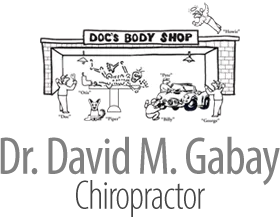Even experienced exercisers sometimes find it difficult to know how much to do. For the beginner this uncertainty represents a significant stumbling block. Fortunately well-established guidelines and protocols exist to provide assistance to all exercisers, regardless of your skill level.
In general, the beginning exerciser requires the most instruction. The key is to build up strength and endurance slowly and not do too much too soon. In terms of strength training, the best plan is to determine at what weight you can comfortably perform three sets of eight repetitions. If you can't do three sets of eight reps at the weight you've selected, it's too heavy. If doing three sets of eight reps with the weight you've chosen doesn't feel like anything at all, then the weight is too light. Overall, of course, too light is better than too heavy. The majority of strength training injuries occur when you're attempting to train with an inappropriately heavy weight.
For example, you've selected 15-pound dumbbells with which to perform your bench press routine. You can comfortably do three sets of eight reps. Fifteen pounds is not too light and not too heavy. During the course of your next several weight training sessions, build up to three sets of 12 reps using the 15-pound dumbbells. When you can do three sets of 12 reps successfully, the next time you do your bench press routine you'll increase the weight by approximately 10%. In other words, you'll use the next heaviest weight, which is usually 17.5 pounds in a well-equipped gym. Begin with three sets of eight reps with the 17.5-pound dumbbells, and progress over the next several sessions to three sets of 12 reps. Then you'll repeat the sequence with 20-pound dumbbells, starting at three sets of eight reps and building up to three sets of 12 reps. You'll follow this formula with all of your strength training exercises. In this way, using a safe, smart, and graduated program, you'll consistently build lean muscle mass, gain improved strength and efficiency of your cardiovascular system, and most likely lose several pounds as stored fat is converted to muscle.1
The same principles apply to cardiovascular exercises such as walking, running, biking, and swimming. If you haven't exercised in a very long time, walking is a good method with which to begin.2,3 On your first day, go for a normally paced 10- or 15-minute walk. Don't be concerned that your walk feels like it's over only a few minutes after it's begun. Your main focus should be on getting started, not on how much or how little you're doing in the first few sessions. Over the course of four to six weeks, build up a minute or two each session until you're able to comfortably walk for 30 minutes at a moderate pace. At this point you can begin to increase your pace gradually, building up to a 30- or 40-minute walk at a brisk pace. At this level, you're going a very good, vigorous cardiovascular workout and your heart, lungs, and other components of your cardiorespiratory system are becoming stronger, healthier, and more efficient.
In this gradual, steady, measured way, all exercisers, of whatever age, prior experience, and skill level, can gain a lifetime of benefit from their fitness programs and minimize the likelihood of setbacks or injury.
1Hawkins M, et al: Impact of an exercise intervention on physical activity during pregnancy: the behaviors affecting baby and you study. Am J Public Health 2014 Oct;104(10):e74-81. doi: 10.2105/AJPH.2014.302072. Epub 2014 Aug 14
2Hanson S, Jones A: Is there evidence that walking groups have health benefits? A systematic review and meta-analysis. Br J Sports Med 2015 Jan 19. pii: bjsports-2014-094157. doi: 10.1136/bjsports-2014-094157. [Epub ahead of print]
3Varma VR, et al: Low-intensity daily walking activity is associated with hippocampal volume in older adults. Hippocampus 2014 Dec 7. doi: 10.1002/hipo.22397. [Epub ahead of print]
